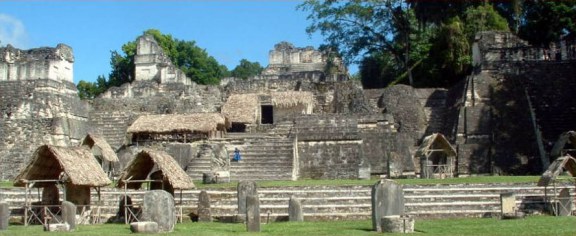

Location: Orange Walk Town, Orange Town District
Colha Archaeological Site is an ancient Mayan city situated 52 km North of Belize City on the outskirts of Orange Walk Town, Orange Town District in Belize. Colha was first settled during Early Preceramic period around 3000 BC. It was inhabited taken and burned several times by enemy forces, but every time its residents came back to reconstruct and rebuild their hometown.
The classic period represents a time of
fluctuation in population and power for Colha. Three occupational
phases are recognized at Colha during the classic period. Each has
an associated ceramic complex. The Early Classic (A.D. 250-600) is
associated with the Cobweb complex. The Late Classic (A.D.
600-700)is associated with the Bomba complex. And, the Terminal
Classic (A.D. 700-875) is associated with the Masson complex.
Early Classic Colha (A.D. 250-600)
According to Buttles,
"During the Early Classic Cobweb complex are apparent decreases in
population, lithic production, settlement patterns, mortuary
practices, and in general, material culture". While Cobweb complex
ceramics are found throughout the site, the assemblage is the
smallest numerically of the complexes associated with Colha and
there have been no lithics workshops attributed to this period at
the site. The latter may be an indication of the growing importance
of lithic workshops at Altun Ha, Belize and indicative of a shift in
political power in the region.
Late Classic Colha
(A.D.600-700)
Despite the noted reduction and size and importance
during the Early classic, Colha may have reached its fluorescence
during the Late Classic. According to Jack Eaton, Late Classic Colha
may have grown to a population of nearly 1,000 people in its
epicenter and 4,000 within a six square kilometer area.
Consequently, a majority of architectural remains, both public and
domestic are erected in the late Classic and there is a large
increase in the number of raised fields found at Cobweb Swamp during
this period. However, while evidence of ritual caching return, they
do not reach the levels found in the Late Preclassic or Protoclassic
and the quantity of imported prestige artifacts is less than found
during these previous times. Lithics, on the other hand, return to
prominence at this time, but the control and distribution of these
throughout the site shifts considerably. In number, lithics
workshops of the Late Classic exceed the Preclassic or Protoclassic.
However, their distribution is spread throughout the site and seem
to be more independent of state control at this time. These
household workshops seem to specialize what they are creating and
how they are creating these lithics.
Terminal Classic Colha
(A.D. 700-875)
In terms of material culture it is difficult to
differentiate between the Terminal Classic and Late Classic. On
exception to this may be seen in a shift in lithic assemblages and
ceramics toward a style that is influenced by major sites on the
Yucatan. Valdez sees this shift in the inclusion of Petkanche Orange
polychrome ceramics in the Masson complex and the appearance trade
wares from the Yucatan (Ticul Thin Slate ceramics). While others
note the specialization in smaller stemmed blades to indicate this
shift through the adoption of atlatl technology and/or the increased
demand for these points in the export market to accommodate an
increase in Maya warfare. According to Buttles, this shift "suggests
changes in cultural and political interaction spheres".
The
end of the Classic period may be seen through the cessation of
maintenance of building 2012 and through a unique deposit at
operation 2011. While building 2012 shows some evidence of continued
use through the Terminal Classic construction of two small shrines
at its base, buildings 2011 and 2025, both ceremonial in nature,
appear to have been burnt. Within operation 2011, an 80 cm by 110 cm
pit was found in the 1980 field season and dates to between A.D. 659
and A.D. 782. It contained skulls of 10 men, 10 women, and 10
children. These had been removed through decapitation and burnt.
Massey notes that the skulls in the skull pit were likely those of
elite citizens as evidenced by their cranial shaping and filled
teeth.